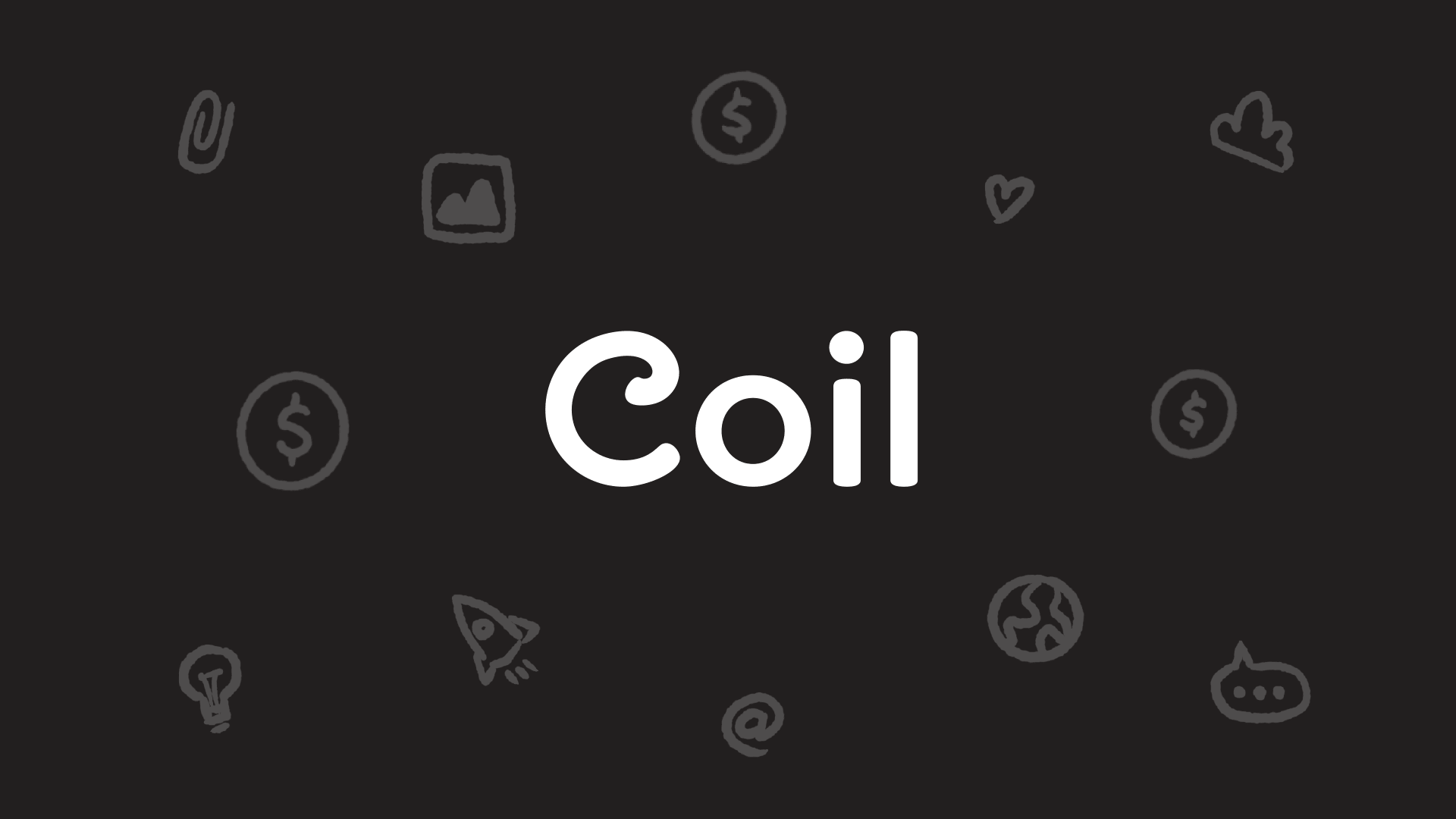- Published on
This Blog Is Powered By Web Monetization
- Author
- Name
- Keith Brewster
- @switchcasebreak
The web is broken—this might not come as a surprise. This information superhighway has changed so many facets of our lives in such fundamental ways that it's hard to imagine what things were like before we became obsessed with funny animal videos and stalking people we barely know from high school. There's a fairly decent chance that many of you reading this won't remember a time when the internet wasn't pumping its byte-sized packets into every Xbox and smart refrigerator around us. For all the good it's done, it's also given us things like this (I find it difficult to believe in karma when nothing we've collectively done as a species deserves this degree of punishment). However, I'm not here to talk about celebrities trying desperately to appear relatable, I'm here to talk about the modern landscape for content on the web.

Me, being relatable to the young audiences reading this blog.
Individual content creators are now at the forefront of the modern zeitgeist. These online influencers have blurred the line of the traditional idea of "celebrity"—we have YouTubers appearing next to A-list movie stars on late night talk shows, and somehow that doesn't seem like a crazy thing (on the inverse, we also have A-list movie stars making YouTube accounts which does seem like a crazy thing). These creators hold unprecedented access to audiences that would rival the populations of mid-size nations; luckily, most of them are probably not legally old enough to drive, so we should be relatively safe from invasions (good luck crossing the border on foot, nerds).
With the internet opening up so many gateways for people to produce content and build audiences, it would make sense for there to be a simple and effective method for these creators to monetize their content. It turns out that this is absolutely not the case. Historically, there have been three methods available for monetization: ads, subscription paywalls, or moving your content to an established platform (that also uses ads or subscriptions). Each of these methods come with their own set of drawbacks; either damaging the overall experience for the audience or stripping the creator of governance over their content. Let me guide you through why these options are objectively terrible:
Ads
They say the two certainties in life are death and taxes, but advertisements have to scrape in at a close third. From the ancient Egyptians creating wall posters from papyrus, to the nicotine-stained, whiskey-swilling world of Mad Men, to the early-2000's barrage of internet casino game popups, ads have been an inescapable part of the human experience since the beginning. Historically, many of these internet ads have utilized invasive and predatory tracking techniques (and let's not forget the autoplaying videos). It turns out people really didn't like this. In response, ad blockers were developed. This created a lose/lose situation: creators who were running ads to monetize their content were no longer getting paid, and audiences had to install third-party software just to make navigating the web a bearable experience. Yikes.
I legitimately worked on a website that used this many ads.
Paywalls
There was a time where print media was unstoppable. There were magazine subscriptions for just about every subject and hobby you could think of. Rich socialites could subscribe to "Big Boats Monthly" and read up on the latest news about... boat stuff? (I probably could have used a better example). Unfortunately for them, it turns out that the internet is a pretty convenient way of getting information about things. Printing a magazine required someone to lay out the content, sell ad space, edit each piece, print the physical magazine, and then finally set up distribution. In comparison, updating content on the internet can usually be accomplished with a single click of a button (also you can't roll back a magazine when you accidentally publish an embarrassing mistake—something I'm already intimately familiar with since maintaining this blog).
Many publications started to move their content online. However, a lot of their revenue had come from the subscriptions people were paying for the physical magazine. They decided to bring that subscription model with them, and started blocking their content behind paywalls. There is nothing more frustrating than landing on an article you're interested in, only to be blasted with a page-sized "SUBSCRIBE NOW" modal. Also, when we hide high-quality content behind paywalls, it pushes people into consuming articles from less-reliable (and sometimes dangerous) news sources.

Portable Restroom Operator magazine. Yes, it's a real thing.
Working With A Pre-Established platform
Certainly the most popular modern-day option, putting your content on a platform is the easiest and most accessible way for a creator to monetize their content. It's a fairly attractive choice—there's very little overhead in setup. Everything is fully-managed; you don't need to worry about infrastructure or any of the other technological aspects, just your own content. Also, YouTube has created literal millionaires. Spotify has started signing podcasters to massive exclusivity deals. TikTok has... well, people pretending to eat bugs for money. The problem with these platforms is that you lose governance over your content. You're bound to their terms of service, and constantly shifting policies can quickly have your content demonetized or shadowbanned. On top of that, you're constantly battling an ever-changing magical algorithm—meaning you're stuck playing by someone else's terms.
Trying to figure out the YouTube algorithm so your review of Mighty Morphin Power Rangers: The Movie (1995) gets more than 3 views.
Why can't we have a solution that's not at the expense of the creator's governance over their content, or the privacy of the audience consuming it? Our data has been used time and time again to influence what we see, read, and how we subconsciously behave. We've seen incredible shifts in digital transformation and the democratization of content creation, so why are we still reliant on archaic models of monetization? It turns out there are people looking to fix these problems. Let me introduce you to:
Web Monetization
Web Monetization is a proposal for a JavaScript-based browser API providing an open and native method for streaming payments across the web. This is possible through Interledger, a neutral and currency-agnostic request-response protocol for the transfer of money. With these tools, we now have the ability to quickly and safely stream payments between two users. Because the Web Monetization API executes in the browser, you can listen for these events and use them to craft a dynamic user experience. This opens up the gateway for a ton of really cool ideas. So cool, in fact, that they started a $100m fund to provide grants for these projects.
How It Works (As A User)
Since Web Monetization is still a W3C Proposal, it's not built natively into browsers (with the exception of a new Web3 focused browser called Puma). However, there's a Web Monetization provider called Coil that has extensions available for most modern browsers, allowing you to enter into the Web Monetization ecosystem without a hitch. Here's how it works:
- Create a Coil account
- Start a membership for $5 per month
- Install the Coil Extension for one of their supported browsers
- Log in and start streaming money to creators
- Begin the collective healing process for the internet
Coil will automatically handle streaming micropayments to creators as you navigate to pages and apps that support Web Monetization. They'll use the five dollars you spend for your membership to stream payments in real-time to the creators of the content you view. How cool is that? You can read more about it on their Intro to Coil.

Plus they have a pretty fun logo.
How It Works (As A Creator)
It's super easy to get started as a creator. There are certain prerequisites to getting set up—you can find these on the official Web Monetization Quick Start Guide. It essentially boils down to the following four steps:
- Set up a monetized receiver (wallet). I personally recommend Uphold
- You'll get a unique payment pointer address (something like
$ilp.uphold.com/[your unique hash]) - Create a
<meta>tag on your website that tells Web Monetization providers how to pay you. This will look like:<meta name="monetization" content={your payment pointer address} /> - Alternatively, you can sign up as a creator on Coil (you'll still need to set up a wallet, but they'll help walk you through the process). They also have support for a number of different platforms to monetize your content with. You can read about it here
Caveats
As great as Web Monetization is, it's not without it's own set of drawbacks. It turns out that it's really hard to incentivize people to spend money. Canada's inflation rate recently hit an 18-year high, and bacon is like $56 now (it's literal pandemonium). How are we supposed to convince an audience that they should stream small amounts of money to a creator instead of watching a 15-second advertisement? Five dollars could buy at least half of a Starbucks holiday drink!
That's why I've created Bandi. It's a group of open-source projects intended to help encourage and incentivize users to adopt the Web Monetization ecosystem. It provides the tools to quickly bootstrap and set up a framework for issuing rewards. People love rewards. I used to eat at a little ramen shop in Toronto all the time; not because they were the best (or even the closest), but because they had a stamp card and every 11th bowl was free. Also, you could get a 591 mL pint of Sapporo for $3.00 (or 20 oz for you Americans reading this, just adopt the metric system already). That part wasn't really a reward, it was just a great deal.

Hakata Shoryuken was the G.O.A.T. for people who love a good deal.
Think of something like Air Miles. The money you spend gets converted into bonus points that you can use for things (like buying a plane ticket to escape the miserable Canadian winter). We can incentivize the users that pay for our content in a similar way: each micropayment can be converted to a number of bonus points. These points don't necessarily need to be exchanged for something tangible, some other possible examples include:
- Using the points for vouchers/discounts in a custom marketplace
- Accessing special privileges on your application (for example, spending 5 points to leave a comment on a post)
- Ranking users in different brackets based on contributions (think Patreon)
- Keeping an accumulated total of "experience". Higher levels could unlock additional privileges (think StackOverflow)
Bandi is just one of the many projects funded through Grant For The Web. This program is a collaborative effort that provides funding to some incredible and creative projects in the Web Monetization space. If you're interested in the topics I've covered in this blog, check out some of the amazing projects they're funding, or stop by the Web Monetization community. I have another upcoming post detailing my efforts to hook Bandi up to this blog. If you want to read more on the Bandi project, check out my final grant update here. Cheers!
Share (or don't):